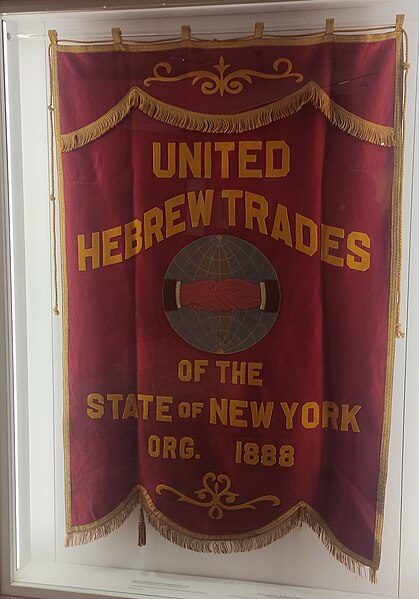The United Hebrew Trades was an association of Jewish labor unions in New York formed in the late 1880s. The organization was inspired by and modeled upon the United German Trades, formed decades earlier by German immigrants to the United States who were active in the German, and later the German-American, labor movement.
United Hebrew Trades
1904 New York City rent strike
The 1904 New York City rent strike was the first mass rent strike in New York City. It took place in the Lower East Side in the Spring of 1904, spreading to 2,000 families across 800 tenements and lasting nearly a month. The strike was a response to proposed rent increases amid a housing shortage. It was primarily organized by local Jewish immigrant women with organizational strategies and language learned from the 1902 kosher meat boycott and the history of labor organizing in the area. Tenant organizers, socialists, and local labor unions united as the New York Protective Rent Association; women who had initially organized the strike such as Bertha Liebson were removed from leadership positions. The strike was successful in the short term, halting the majority of proposed rent increases for the following year. However, landlords began raising rents again a year later, leading to the 1907 New York City Rent Strike.

Political cartoon published by The Daily Forward during the 1904 NYC Rent Strike


